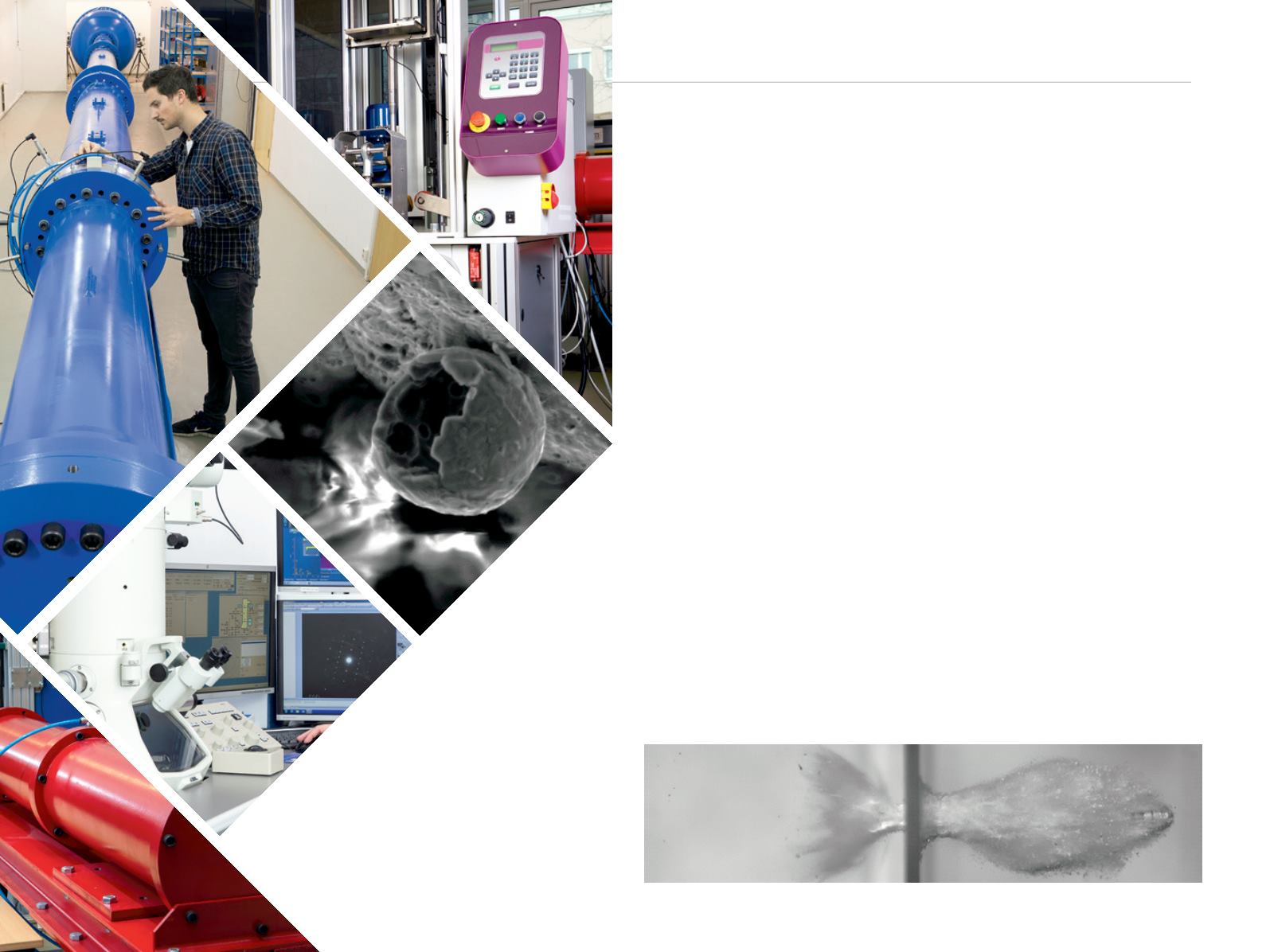

22
The picture shows a test where the
Phantom V1610 high-speed camera has
been used. A 7 mm laminated safety glass
is hit by a 7.62 calibre lead bullet at a
speed of 800 m/s. The camera is set to a
frame rate of 60 000 FPS and exposure
time 0.452 µs.
10
12
8
11
Transmission electron microscope (TEM) laboratory (12)
SFI CASA cooperates with the TEM Gemini Centre at NTNU,
providing SFI CASA access to 5 TEMs: a JEOL double corrected
ColdFEG ARM200F (2013), a JEOL 2100F (2013), a JEOL 2100
(2013), a Philips CM30 (1989) and a JEOL 2010 (1993). The TEM
Gemini Centre also has a well equipped sample preparation lab
and computing facilities.
Cameras
CASA has a FLIR SC7500 infrared camera that can convert
infrared radiation to a visual image that depicts thermal
variations across an object or scene. Thus it can be used
to measure the surface temperature of a specimen under
inelastic deformations. With a resolution of 320x256 pixels
the maximum frame rate is 380 per second, while at a
resolution of 48x4 pixels the maximum frame rate is 31
800 per second (FPS). During impact testing of materials
and structures, the events are recorded using high-speed
cameras. The research group purchased a new Kirana-05M
camera in 2016 with a maximum frame rate of 5 000 000 FPS,
allowing detailed studies of crack propagation. In addition
the research group has 4 more high-speed cameras and
several cameras for Digital Image Correlation measurements.
Portable measuring arm and 3D printer
In addition to the new high-speed camera mentioned above, a
portable measuring arm for 3D scanning and a 3D printer were
acquired in 2016. The new equipment further improves the
connection between physical testing and numerical analyses.
Droptower impact system (8)
In this machine impact testing of materials and small
components can be carried out at low and high temperatures.
The mass of the projectile ranges from 2-70 kg and gives an
impact velocity in the range 0.8-24 m/s. All tests can be carried
out with an instrumented nose which gives the impact force as
a function of time.
Split-Hopkinson pressure bar (SHPB) (9)
The split-Hopkinson pressure bar consists of a high-pressure
chamber unit that can accelerate a striker bar against the end
of the input bar. A compression stress wave is then generated
in the input bar and the test sample sandwiched between the
input and output bars is subjected to a dynamic loading.
Shock tube facility (10)
The SIMLab Shock Tube Facility consists of a long tube and a
tank. The tube is 18.2 m long and is divided into six sections.
The tube ends in a 5.1 m
3
dump tank. The tube starts with
a circular internal cross-section with a diameter of 0.34 m
before it is transformed to a square cross-section of 0.3 m x
0.3 m. Threaded holes in the tube floor enable mounting of test
specimens in the test section, and windows in the test section
and the dump tank allow high-speed cameras to investigate
the structural response during an experiment.
Scanning electron microscope (SEM) laboratory (11)
SFI CASA has access to a SEM lab with the following equipment:
Zeiss SUPRA 55VP (LVFESEM, 2006), Hitachi S-4300SE (FESEM,
2002), Zeiss, Ultra 55LE, FESEM (2007), Jeol 840 (1989). 3 SEMs
are equipped with EDS and EBSD. The laboratory have in-situ
sub-stage systems for EBSD tensile and thermo mechanical
experiments (heating, and cooling down to -60 °C).
9


















